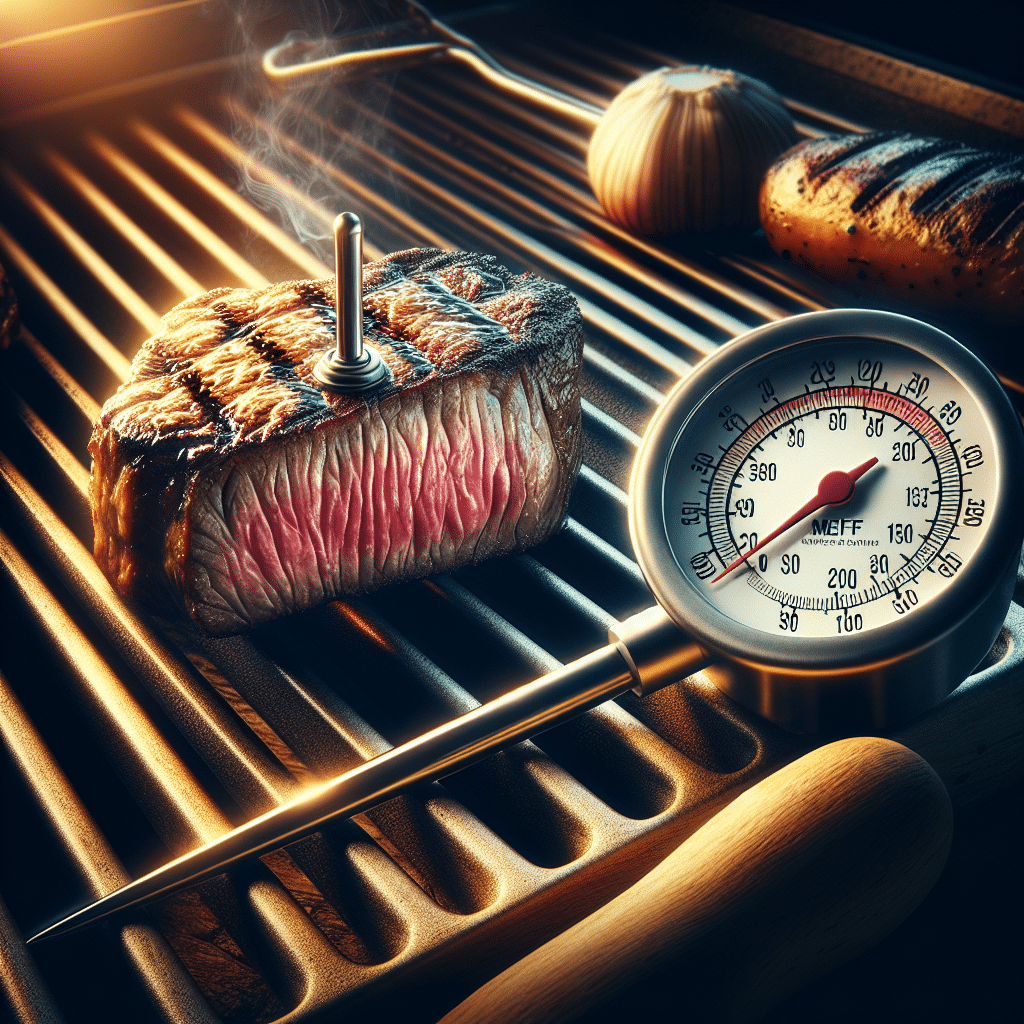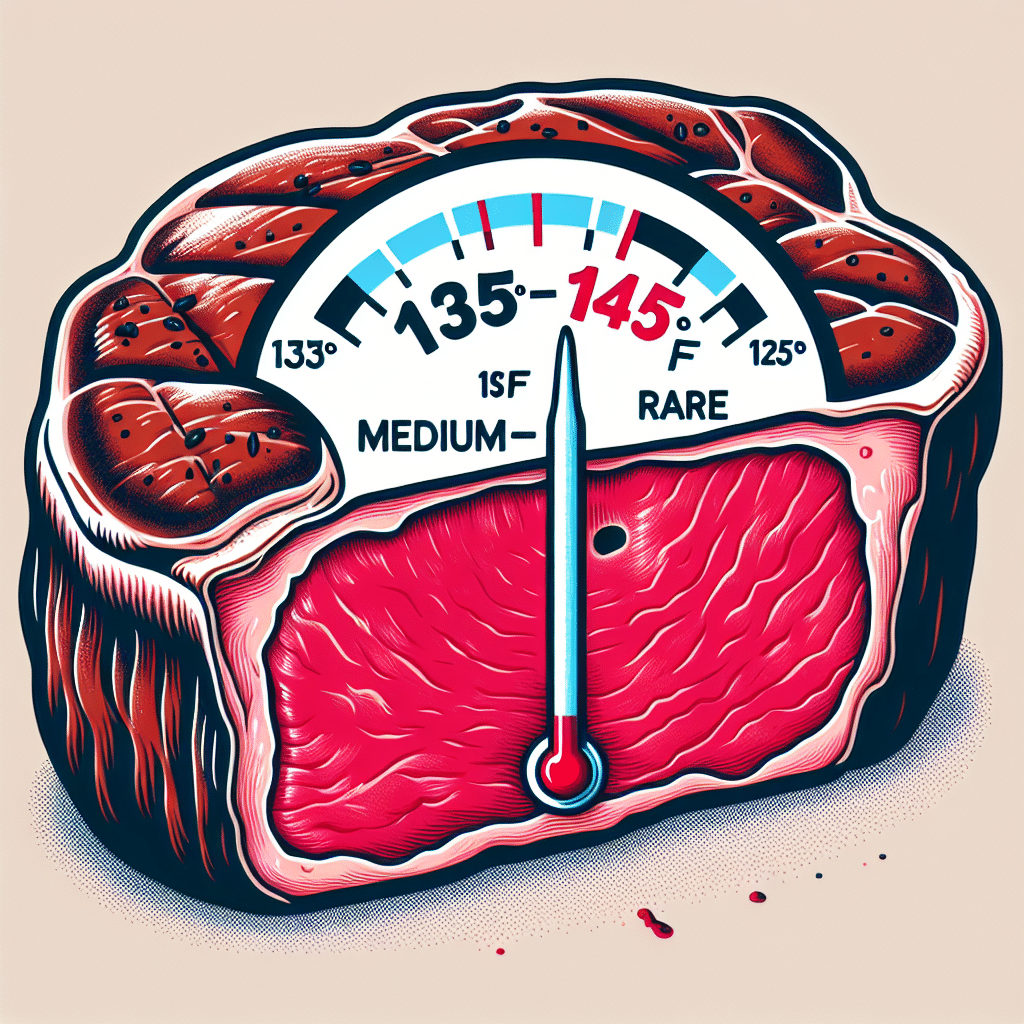What Temperature is Medium Rare?
Medium rare is a popular and preferred doneness level for steak and other meat cuts, characterized by its juicy, tender texture and a warm, red center. The ideal internal temperature for medium rare meat is typically between 130°F to 135°F (54°C to 57°C). At this temperature, the meat maintains a balance of flavor and tenderness, showcasing the natural juices and enhancing the dining experience. Understanding how to accurately measure the temperature is key to achieving this perfect level of doneness, often using an instant-read thermometer. This essential knowledge not only ensures that your meat is cooked properly but also allows you to impress guests by serving perfectly prepared dishes consistently.
Understanding Medium Rare: Key Characteristics
Medium rare is often deemed the sweet spot for achieving optimal flavor and texture in cooked meat. This doneness level delivers a tender, juicy bite with a slight resistance, making it a favorite among chefs and grilling enthusiasts. Here are some key characteristics:
- Temperature Range: Cooked to an internal temperature of 130°F to 135°F (54°C to 57°C).
- Appearance: The center should be warm and red, surrounded by a slightly firmer outer layer that appears brown or gray.
- Juiciness: Retains moisture, leading to a more flavorful experience.
- Texture: Tender and juicy, striking a perfect balance between raw and well-done.
The Importance of Accurate Temperature Measurement
Knowing the precise temperature for medium rare is essential for both flavor and safety. Cooking meat to the proper temperature ensures that harmful bacteria, such as E. coli, are killed, while also preserving the meat’s natural flavors. An instant-read thermometer is a trusted tool for this purpose, allowing you to probe the thickest part of the meat without biasing the results. Make sure to remove the meat from the heat source shortly after it reaches the desired temperature, as residual heat—also known as “carryover cooking”—can cause the temperature to rise further by a few degrees.
Cooking Methods for Achieving Medium Rare
There are various cooking methods you can employ to achieve a perfect medium rare steak, including:
Grilling
Grilling is a common method for preparing steaks. Preheat your grill to high heat, and cook the steak for about 4–5 minutes on each side. Use a meat thermometer to check the internal temperature.
Pan-Seering
This technique involves heating a heavy skillet and searing the steak for 3–4 minutes on each side, depending on thickness. Use a small amount of oil to enhance browning.
Oven Finishing
After searing the steak, finishing it in a preheated oven at 325°F (163°C) for several minutes can help achieve the desired doneness while retaining juiciness.
Sous Vide
Sous vide cooking involves sealing meat in a vacuum bag and immersing it in a water bath maintained at a precise temperature for an extended period. This method can guarantee perfect medium rare every time and requires minimal effort.
Common Mistakes to Avoid
Achieving the perfect medium rare steak can be tricky, but avoiding these common mistakes can enhance your results:
- Not Using a Thermometer: Relying solely on time instead of temperature can lead to unpredictable doneness.
- Crowding the Grill: Cooking too many steaks at once can lead to uneven cooking.
- Resting Time: Skipping the resting period can result in juices running out when you cut into the meat.
- Feeling for Doneness: Using the touch test without experience can yield inaccurate results.
FAQs About Medium Rare Cooking
1. Can you eat medium rare beef?
Yes, medium rare beef is considered safe to eat as long as it is sourced and handled properly. The USDA recommends that whole cuts of beef reach at least 145°F (63°C) for safety, with a resting time of 3 minutes.
2. What does medium rare look like when cut?
When you cut into a medium rare steak, you will observe a warm, red center with juices emerging. The exterior will be brown, and there will be minimal resistance when you bite into it.
3. How can you tell if a steak is medium rare without a thermometer?
While a thermometer is the most accurate method, you can use the touch test: the steak should feel soft yet slightly firm. However, this method may take experience to master accurately.
4. What cuts of meat are best for cooking medium rare?
Popular cuts for cooking medium rare include ribeye, filet mignon, sirloin, and strip steak due to their tenderness and flavor.
5. How does medium rare compare to other levels of doneness?
Medium rare is juicier and more flavorful than medium (140°F to 145°F; 60°C to 63°C) and medium-well (150°F to 155°F; 66°C to 68°C). Each level has its distinct characteristics, with medium rare often preferred for its superior taste and texture.
Conclusion
Achieving the perfect medium rare steak is an art that requires practice and precision. By understanding the ideal temperature, employing the right cooking methods, and avoiding common pitfalls, you can consistently serve deliciously tender and juicy meats. Whether you are grilling at a barbecue or preparing a fine dining experience at home, mastering this skill will undoubtedly elevate your cooking.
Remember: the journey to culinary excellence is not just about following recipes but understanding the science behind cooking methods. With ongoing practice and attention to detail, you can become a confident cook who serves steaks with a perfect medium rare every time.


